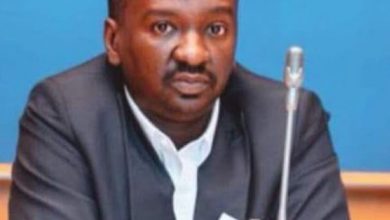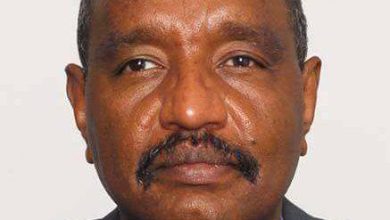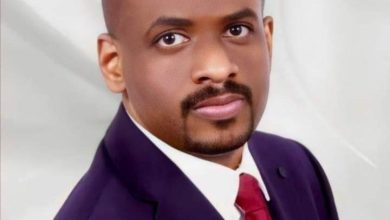Nairobi Declaration.. The West’s Predicament in Sudan

By: Rekabi Hassan Yaqoub
Western governments, led by the United States, have gotten themselves into a major dilemma regarding their position towards the current Sudanese crisis and the issue of war in this large country, which is endowed with abundant natural resources and a strategic geographic location, and is characterized by creative human and cultural diversity that could have placed it in an ideal political, economic, and cultural position regionally. Internationally, but as a result of the struggle of the “seniors” and the ambitions of the “juniors,” these advantages have turned into a source of misery from independence to the present day.
I say the governments of the West, not the West in its comprehensive sense because Israel’s war on Gaza and its dramatic repercussions produced for the world a reality different from what prevailed before October 7, 2023, it has become clear to everyone that the governments of Western countries that sided with Israel are completely disconnected from their societies and peoples, and do not logically express values, desires, and trends. those communities. This opens the door wide to reconsider the validity of the mechanisms of Western democracy on the basis of which governments are chosen, and to what extent they reflect the visions and preferences of voters.
The most evidence of this separation between governments and their people is the repressive measures with which the United States faced the huge demonstrations that were organized denouncing the official bias towards the Israeli side.
This digression is necessary to understand the full picture of the predicament of the (Western regimes) that have become stuck in the mire of the Sudanese crisis, and do not know how to get out of it.
These regimes, led by the United States, have worked diligently since the beginning of the 1990s to eliminate the rule of deposed President Omar Al-Bashir, as part of their attempt to besiege the movement of political Islam. Despite the West’s mobilization of its political, intelligence, and economic resources, and its broad influence in Sudan’s regional environment, this work took much longer than it had planned, as it continued from 1990 until April 2019.
In the wake of the success of the youth revolution, which led to the removal of President Al-Bashir, with the help of the security committee consisting of the army, police, and intelligence, the West threw its weight behind the civilian party components that emerged to the surface of events, and presented themselves as the tip of the spear in the nascent revolution, adopting the slogans of the revolution, and monopolizing speech in the name of the revolutionaries. It called itself the Forces of Freedom and Change (FFC) .
Some dangerous and hate-inciting slogans have emerged that were formulated by the leaders of the FFC, and they made them a slogan for the revolution (Kol kuz ndoso dos). The word (kuz) is a derogatory term they use for those belonging to the Islamic movement. The translation of the slogan is (We will crush every Islamist with our feet).
The West’s plan was dual, based on supporting the FFC , simultaneously with the elimination of the existing regime, and this dual mission was entrusted to three Western ambassadors, who were the engineers who supervised the implementation of the dual Western project in Sudan under the banner: “Replacing military rule with civil rule.” And spreading democracy,” this was the shining banner of the West’s project in Sudan.
The engineers of the Western project, due to their poor judgment and rush to implement the project, decided to take a shorter and less expensive path according to their estimates, so they decided to bring together the Forces of Freedom and Change, known by the abbreviation “FFC,” and the Rapid Support Militia (RSF) , after the hostility between them had been intense since the sit-in dispersal massacre. It (insolently) accused the RSF Militia of carrying it out. The plan was for FFC to be the political incubator for the new coalition and the RSF Militia its military arm, meaning that the militia would replace the Sudanese army, which the West believes is under the control of Islamists.
To ensure the success of the plan, the (Framework Agreement) was designed, which entails the dismantling of the army, under the soft name of: “restructuring.” They deliberately bombarded the agreement with clauses that the army could not accept, and stipulated that it be accepted in its entirety as the only solution, and that the alternative to it was war. Thus, “FFC” and its military ally, and behind them the Western Trio, were placed in a “knot in the saw.” The army and other national political forces rejected it, and then the political situation in the country moved to a “warm-up” mode for the other alternative, which is war.
The fire of war broke out and was destined to last no more than a few hours, or a few days in the worst case scenario. But the winds of war came in a way that the ships of those who waged it did not desire, so the war prolonged and entered its second year, and the Rapid Support Militia was unable to eliminate the army. Rather, worse than that, the militia turned into gangs of looting, plundering, raping, stealing, and killing civilians, destroying civilian facilities, and committing war crimes and genocide. mass in West Darfur, as documented and known. It is still killing, looting, stealing, destroying civilian objects, and displacing citizens in Gezira State and parts of White Nile State, and is preparing to attack Al-Fasher, the capital of North Darfur State.
In the midst of this deteriorating situation, a political agreement document suddenly emerged called (the Nairobi Declaration), which was signed under the auspices of Kenyan President William Ruto on May 18. This declaration included 3 leaders, including two leaders of armed movements, namely Abdul Wahid Mohammed. Nour (head of the Sudan Liberation Movement – Darfur), Abdel Aziz Al-Hilu (head of the Sudan People’s Liberation Movement – North), and the third, Abdullah Hamdouk (head of the Coordination of Civil Democratic Forces), known by the abbreviation as (Taqaddum), which is in fact a new name for (FFC). ).
The new old agreement is a modified and expanded version of the framework agreement that sparked the war. What is new about it is one thing, which is a paragraph that talks about self-determination. The framework agreement set conditions, either accepting them in one sentence or (war), while the Nairobi Declaration set conditions that either accepted them in one sentence or (self-determination), which is the code that means separation, the same. A threat here and there, this or a flood.
So, the Sudanese are promised that their country will be fragmented and fragmented, according to the Nairobi Declaration, if they refuse to accept this declaration.
This declaration is considered a “road map” for the project to separate the Darfur region and the Nuba Mountains and Blue Nile regions. It is an extension of the first project that succeeded in igniting the war, but did not achieve the desired results. It is the same traps that are not accepted by the majority of the Sudanese people: “Religion, identity, Culture, lifestyle, structure of the army, regular institutions and security agencies…etc.”
The dilemma of the Western powers that support the new, old project is how to reconcile the two sides of their policy, which is based on supporting the African components against the Arab components on the one hand, and opposing Islamic movements on the other hand.
The problem lies in the fact that the military tool that the West is using to implement the project consists entirely of Arab components, which is the “Rapid Support Militia,” which is hostile to the African components and seeks to eliminate them and replace them, in addition to committing war crimes and genocide against these components, and these crimes have been used in Among Western public opinion, with the aim of distorting the image of Arabs and stigmatizing them as brutal and committing genocide against Muslim groups with ethnic motives, in order to reduce pressure on Israel and justify its war on Gaza and the genocide it is practicing against the Palestinians.
Previously, during the era of President Al-Bashir, the West was promoting allegations that its (Arab Islamic) regime was waging a religious and ethnic war against Christians and non-religious people of African origin in South Sudan and the Nuba Mountains and Blue Nile regions. Then, at another stage, they accused him of committing genocide against the African tribes in Darfur, using the “Rapid Support Militia” composed of Arab tribes.
But here the cycle of days has come, with the West and its circles and systems supporting and using the same militia with an Arab background to implement the project of eliminating the Islamists, as they believe they dominate the army, so they are in a dilemma of reconciling these two contradictions.
What is, then, the fate of (the Rapid Support Militia), and its place in the entities proposed to be established according to the self-determination program?
Where will the murder instrument be hidden? How can this paradox be understood?



